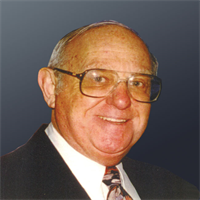 Irv Blackman
Irv BlackmanWould You Invest Four Hours to Stop the IRS from Taking One-Half of Your Wealth?
June 1, 2010Comments
Over the years I have asked the above question hundreds of times, when giving one of my many tax-saving seminars, or over the phone when a reader of this column calls me. The response is almost als the same: an enthusiastic “Yes,” followed by something like, “Irv, how do you do that?”
The answer is with a system, to be exact, with a comprehensive system. Let’s start by getting an overview of the system. Forty years ago the system was designed to reduce estate tax. But over the years it has evolved to focus on keeping all of a client’s wealth. Because the system does keep all of your wealth in your family, it automatically eliminates the impact of the estate tax.
For example, if you are worth $6 million, the entire $6 million goes to your family—all taxes paid in full; if $66 million (it can be more or less), the entire $66 million to your family. Jot down the amount you think you might be worth when you die. That’s the amount the IRS wants to get at. The system will guide you step-by-step to keep every dollar of your wealth in your family.
But a properly designed estate plan must do more. It must be comprehensive, which required us to develop a comprehensive system. Just what does “comprehensive” mean in this context? Well, experience has taught us that the typical client wants not only an estate plan (really a death plan), but also a lifetime plan that accomplishes at a minimum the following:
- Control his wealth, particularly his business, for as long as he lives.
- Have strategies in place that help him save income, payroll, capital gains and gift taxes.
- Find the best to transfer his business to the business children (it can actually be done tax-free).
- Treat the nonbusiness children fairly.
- Make sure he and his wife can maintain their lifestyle for as long as they live.
Note: Generally does not apply to the mega-wealthy—worth about $25 million or more.
- Keep the stock of the family business in the family if one or more of the business children (who owns stock) gets divorced.
A comprehensive plan created using the system handles not only the six “wants” listed above, but almost any tax or economic want of the business owner for himself, his business or his family. The technical aspects of the system are changed or modified as required to deal with changes in the law, economic conditions and other factors over the course of the client’s lifetime.
Now, let’s follow how the system was implemented by a real-life reader (Joe). The system is organized into eight specific steps, described as follows (using Joe as an example):








